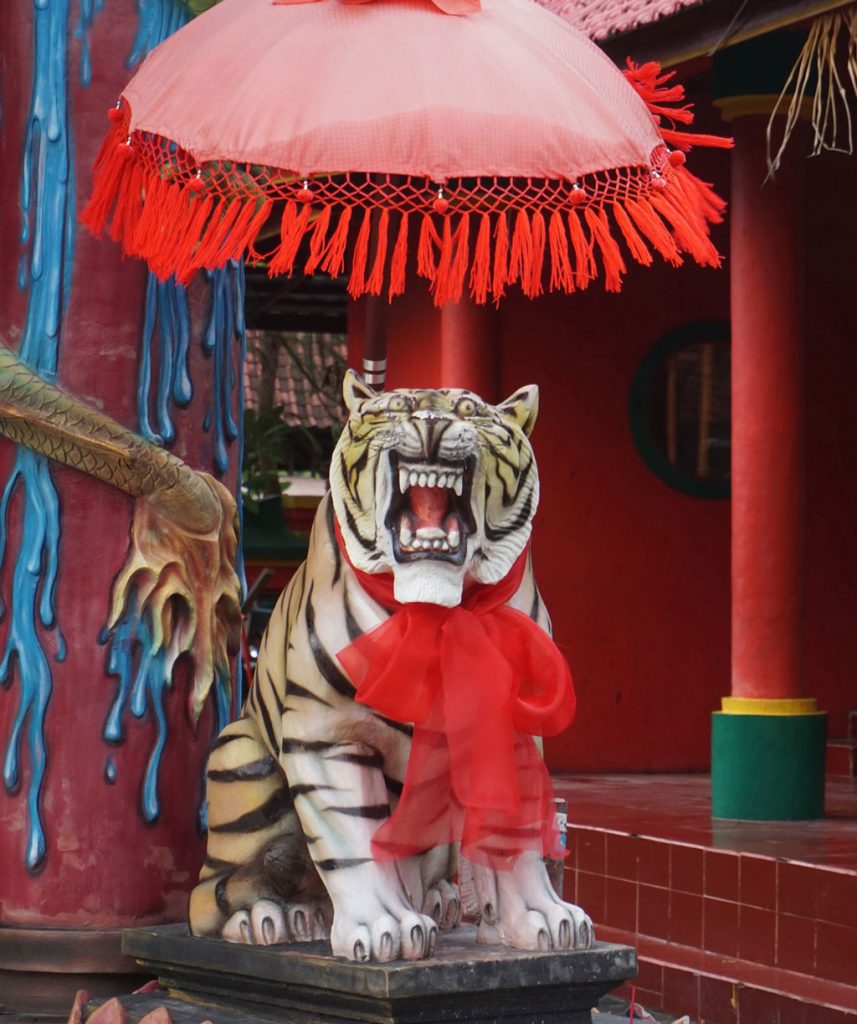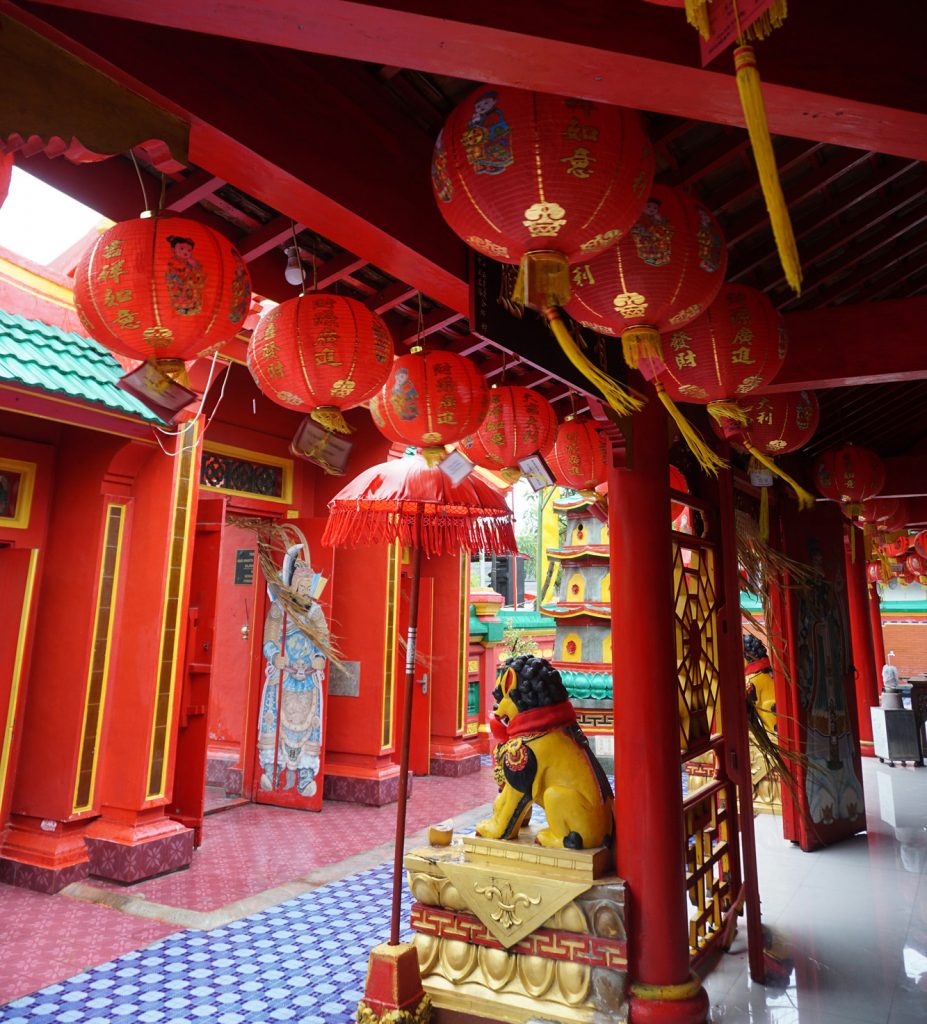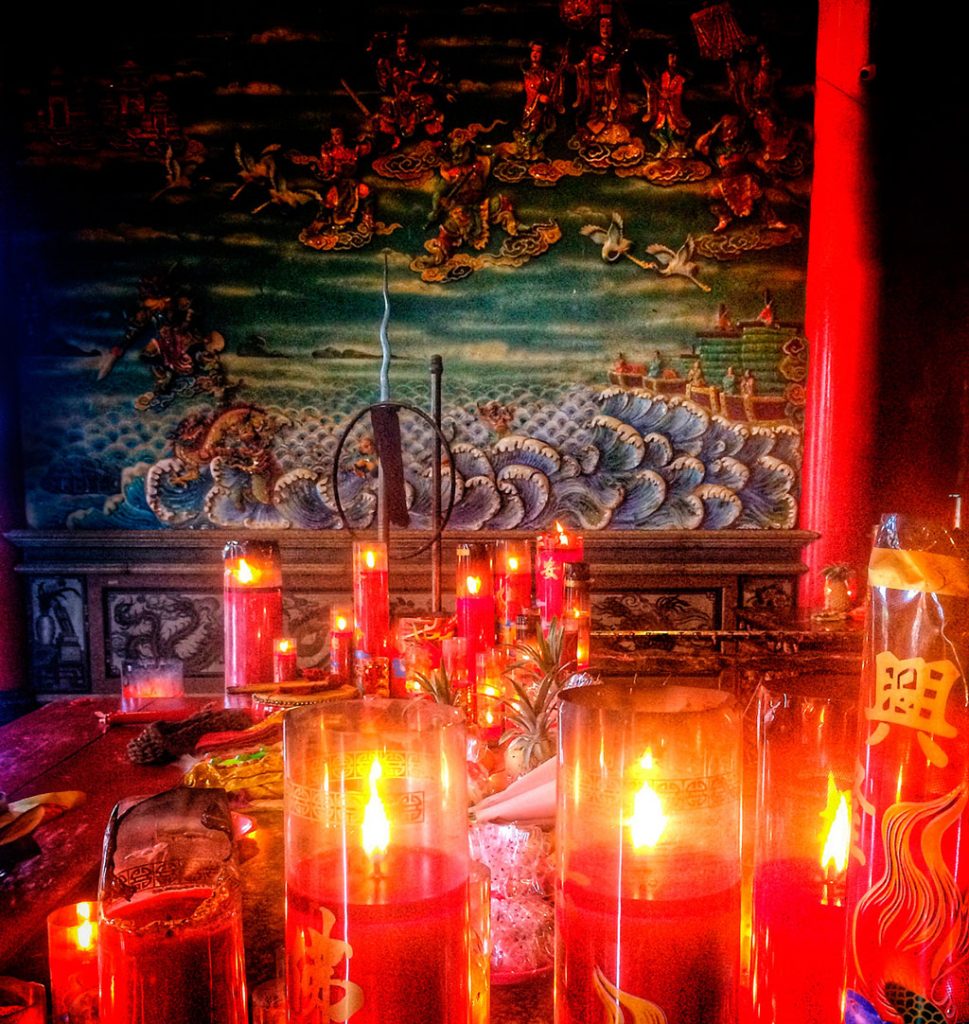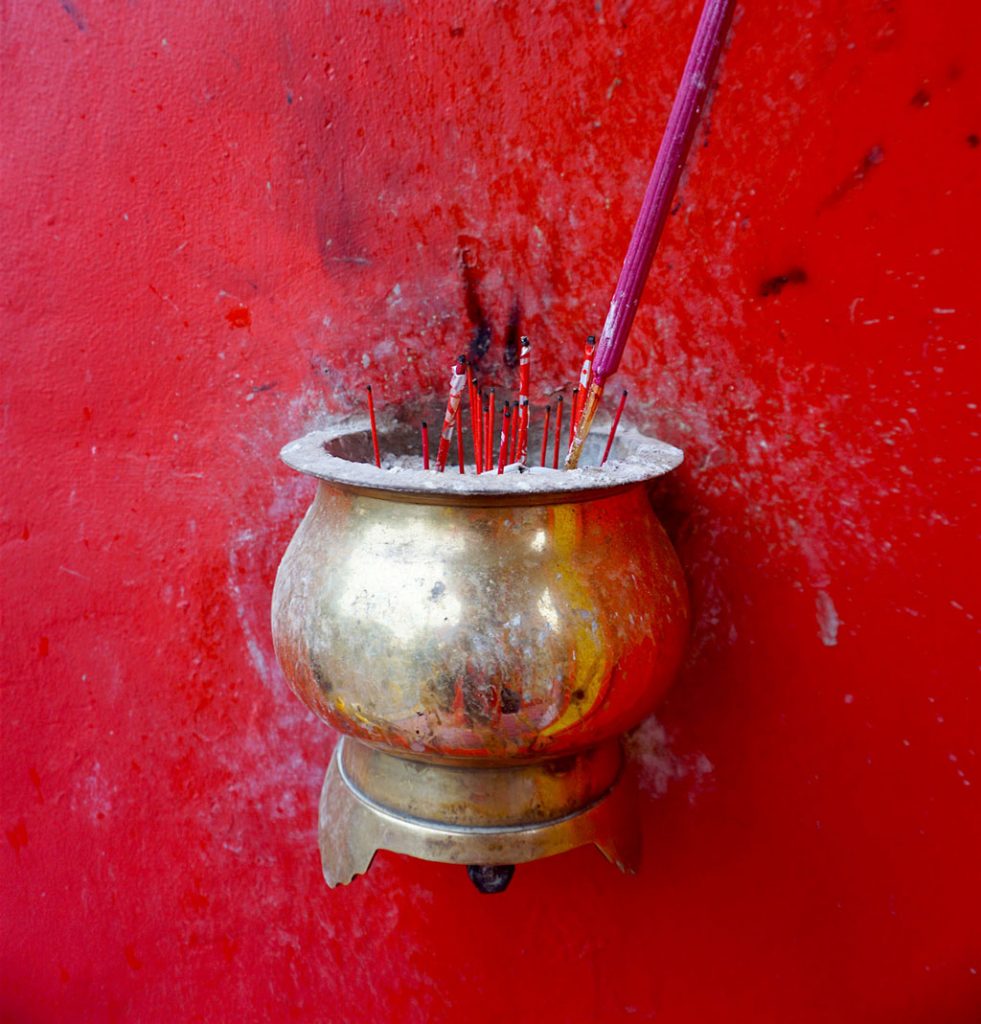Here and there around Bali are gorgeous Chinese temples. Known as klenteng they are mostly old and have seen their share of history and hard times.
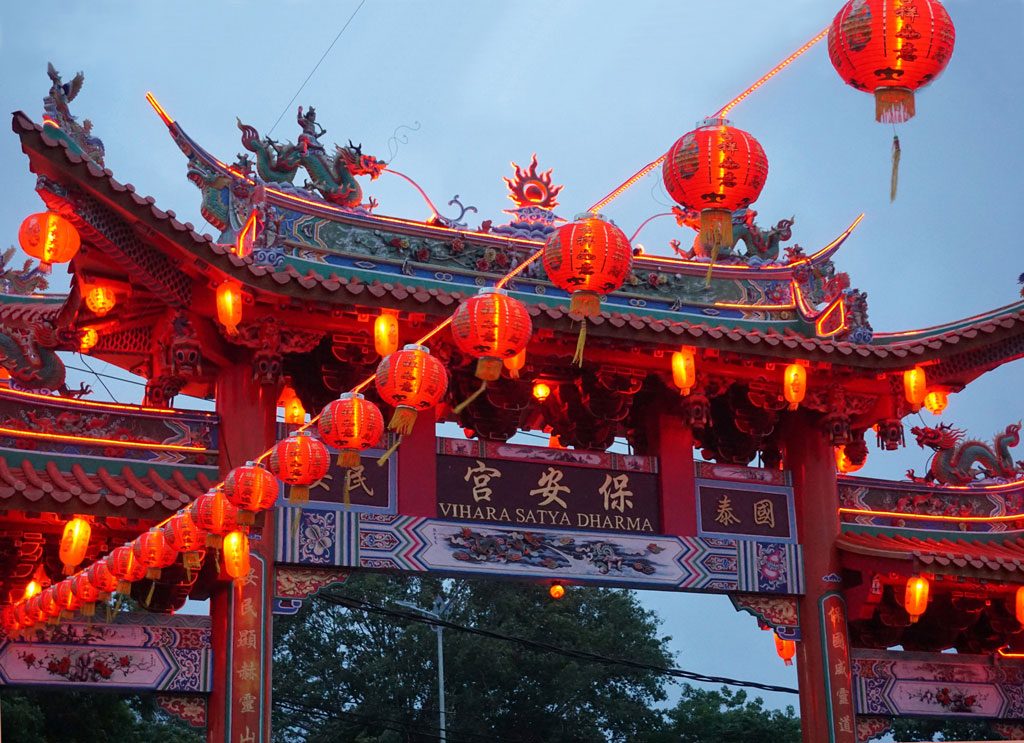
Indonesia and Bali have long had contact with China. Trade started centuries ago and after time, these traders established small communities which then needed to have a place of worship. Small colourful temples were established, decorated with things they held dear. Fierce lion statues, carved panels with Chinese calligraphy, architectural elements that belonged to an old China that no longer exists mark these temples as eclectic visions from another world.
One of the oldest temples is hidden away at Tanjung Benoa, right on the tip of the peninsula, past the string of star hotels, the restaurants and shops, past the water sports centres and warungs. Almost out of sight is the Klenteng Caow Eng Bio, said to be the oldest temple in Bali. Driving through a maze of backstreets and single direction lanes, it lies just near the water, where ancient traders used to come ashore. The temple, it is believed, dates back over three hundred years. The simple architecture and brilliant paint box colours belie its importance, especially amongst the Chinese Community.
The Chinese have been visiting Indonesia since the middle ages and their history is entwined. The Eunich Admiral Cheng Ho visited Java several times in the 13th century and Javanese history, and to a lesser extent Balinese, have many tales of Chinese princesses, dowries and incredible rituals. Even Bali’s famous Barong is said to be influenced by the Chinese lion dances.
For more than thirty years during the times of the “New Order” Government, all the temples suddenly disappeared. No Chinese writing, no Chinese medicine or Chinese language were allowed. Many precious totems were taken down and hidden away from prying eyes, kept safe for what they hoped was a better future. But now the temples are out in all their glory. Lovingly painted in bright colours, they reflect the community solidarity, love and the history that they have endured. Little bits of ancient Chinese philosophy pop up here and there and strange relics like turtle ponds and iconic statuary with ever so cute lions and paintings of deities rest on temple doorways.
Chinese New Year is a time when all the temples are decked out in full costume. New coats of paint, bright red Chinese lanterns, sashes and bows make them look like a kind of colourful Disneyland. Around 4%-5% of Indonesian citizens are of Chinese descent and the Lunar New Year is celebrated with great enthusiasm. Known as Imlek in this country, it brings together Chinese Indonesians of many different backgrounds in a common desire to celebrate and to pay respect to their ancestors.
Bali has seen much influence from China, as can be seen in the Barong dance and in architectural details, especially in Klungkung. Even in the big temple PuraUlunDanauBatur in Kintamani, there is one temple within the complex devoted to the deities. Slowly Bali absorbed these foreign influences which merged it into its own unique culture.
One of the most easy to notice temples is the very new Vihara Satya Dharma located by the expressway entrance. This temple blends the three teachings (Tridharma) of Budhhism, Taoism, and Confucianism. This makes it relevant to all.
Curiously, just like other Chinese temples and Viharas in Bali, this temple also has a Hindu altar in the corner of its outdoor courtyard.
In Kuta the Vihara Dharmayanaat 10 Jl.Padri, which was established in 1876 is so well known that in 1982, HH the Dalai Lama bestowed his blessings upon it.
In Singaraja, by the remnants of what was Bali’s main harbour, the Ling GwanKiong Temple stands as a testament to earlier, more exotic times in the island’s history.
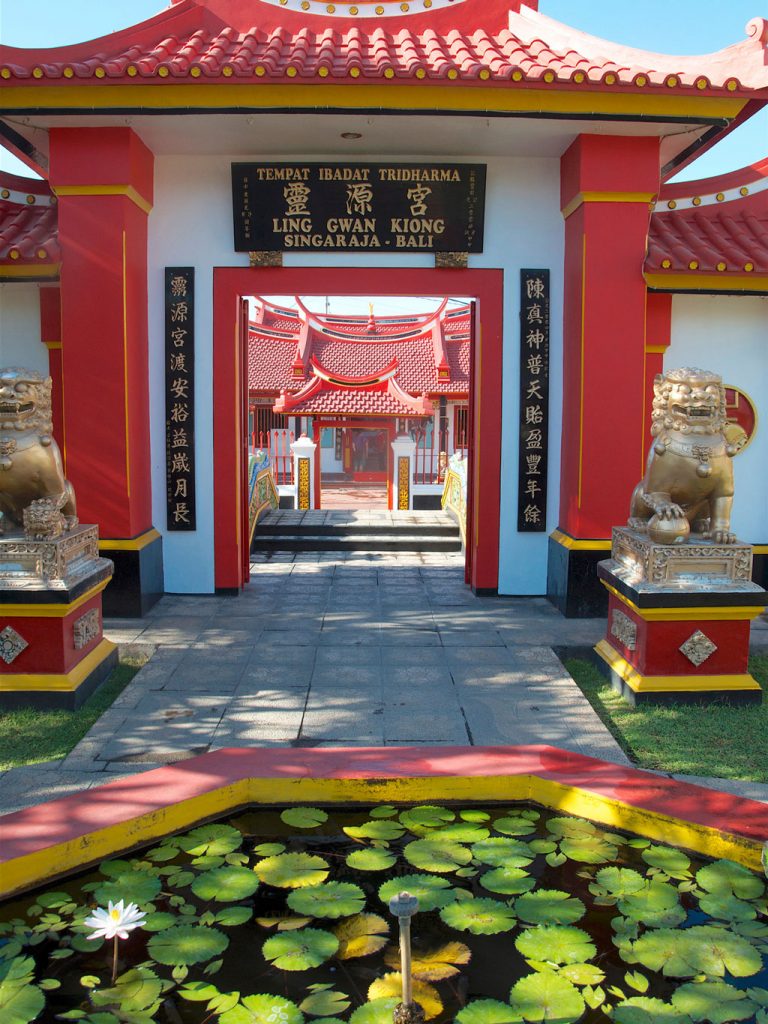
Anyone interested in these delightful remnants of past times, can follow a wonderful trail of discovery around the island to discover just one part of Bali’s exotic history.

